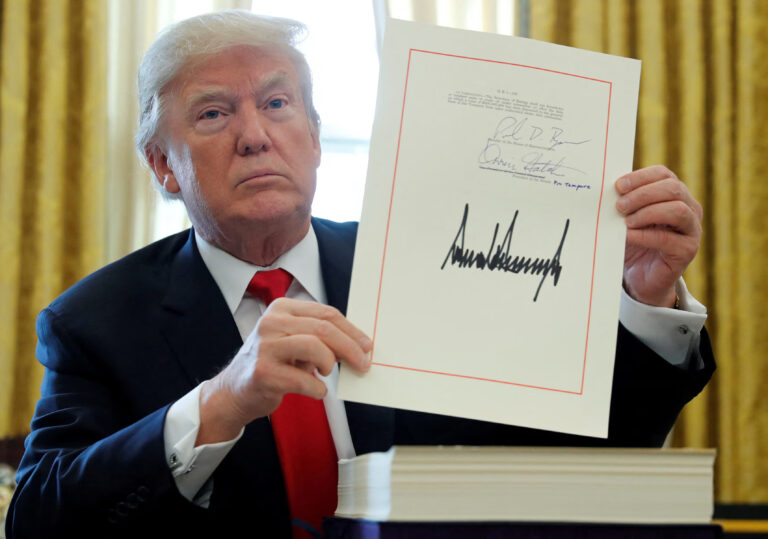🎧 Listen to This Article
WASHINGTON, D.C. – The Senate and House have made strides toward extending the 2017 Tax Cuts and Jobs Act (TCJA), with the 2025 budget reconciliation process now in full swing. President Trump’s proposals, including a permanent extension of the TCJA and new tax policies, are expected to have significant economic impacts, both in terms of federal tax revenue and the broader U.S. economy. Here’s a breakdown of the latest developments and the implications for taxpayers and the nation’s finance
Structured, Insightful Body Content:
- Context & Background – The 2025 Budget Reconciliation Process
As part of the ongoing budget reconciliation process for 2025, the Senate and House have released their respective resolutions, which aim to extend the 2017 Tax Cuts and Jobs Act (TCJA) and push forward President Trump’s tax proposals. The reconciliation process, which allows tax and spending changes to bypass the Senate filibuster, is essential to passing these measures with slim majorities in both chambers. - Key Findings: Impact of Extending the 2017 TCJA
Extending the expiring TCJA would reduce federal tax revenue by $4.5 trillion from 2025 to 2034. However, long-run GDP would rise by 1.1%, offsetting 16% of the revenue losses. The net effect on long-run GNP (American incomes) would be modest at 0.4%, with some benefits flowing to foreign investors in the form of higher interest payments on U.S. debt. - Trump’s Proposals: What’s on the Table?
President Trump has called for the permanent extension of the TCJA and additional measures such as:- No taxes on tips, overtime pay, and Social Security benefits for retirees.
- A new deduction for auto loan interest on American-made cars.
- Higher tariffs on U.S. imports, aimed at generating additional revenue and protecting U.S. industries.
- The Senate & House Budget Resolutions – Key Differences
The House and Senate budget resolutions differ on how to approach tax cuts and spending. The Senate’s resolution does not allow tax cuts but provides new guidance to committees on tax and spending policy changes. The House, on the other hand, permits up to $4.5 trillion in tax cuts, provided spending is reduced by $1.7 trillion. If spending cuts aren’t achieved, the cap on tax cuts will be reduced dollar-for-dollar. - What Does This Mean for the U.S. Economy?
While the proposed tax cuts have the potential to stimulate economic growth, they come at a significant cost. Extending the TCJA would increase the deficit and add to the national debt, even as long-term GDP growth is expected. The effectiveness of the proposed cuts will largely depend on how lawmakers balance spending reductions with the need for economic stimulation. - The Path Forward: Challenges and Opportunities
With the TCJA’s expiration looming at the end of 2025, lawmakers will need to navigate a series of tough choices regarding tax policy. Should they focus on extending the TCJA, or pursue more comprehensive tax reform? The debate will likely continue into the next year, with fiscal responsibility and economic growth both at stake.
For further details, clarification, contributions, or any concerns regarding this article, please contact us at editorial@tax.news. We value your feedback and are committed to providing accurate and timely information. Please note that our privacy policy will handle all inquiries



